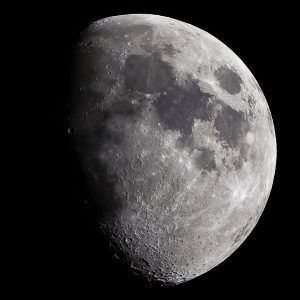The ascender module of China’s robotic lunar probe Chang’e 5 left the surface of the moon at 11 p.m. Beijing time on December 3, marking the probe’s journey return back to the earth. The probe had finished gathering soil samples from the moon and sealing them at 10 p.m. Beijing time on December 2, after landing on the near side of moon, in the Oceanus Procellarum area, the day before. The samples, when they return to earth, possibly around either December 16 or 17, will the first time since the Soviet Union’s Luna 24 mission in 1976 that the Earth will see new samples of lunar soil. According to the China Global Television Network, Chang’e 5 “used two methods for sampling: a robotic arm for multiple-point surface sample collections and drills to penetrate into the soil to collect samples there.”
Chang’e 5 is a part of China’s larger thrust into space in general, and the moon in particular, driven both by desire for global recognition as a leading technological power as well as more base, geostrategic reasons. But China is not alone in its lunar quest. The United States has also committed itself to returning to the moon, with both the outgoing Trump administration and American tech giants aiming sky high. The Trump administration had stated its objective to return Americans to the moon by 2024 through NASA’s Artemis Program. Last October, Jeff Bezos announced that his company Blue Origin, in partnership with Draper, Lockheed Martin, and Northrop Grumman, will bid to build the lunar lander for the U.S. mission.
An argument many (including me) have made when it comes to this new push toward the moon, both for China and the United States, is the celestial body’s potential commercial value, including as a source for critical and rare minerals — including platinum, palladium, rhodium, scandium, and yttrium — as well as Helium-3, an energy source.
In fact, as analysts like Namrata Goswami point out, the Chang’e missions’ founder Ouyang Ziyuan himself has pointed out the possibilities offered by the moon in improving life on earth. Reports suggest that an official with the China Aerospace Science and Technology Corporation has even proposed creating an “Earth-Moon Special Economic Zone” by 2050. As if that was not enough, Belt and Road Initiative proponents also gush about how China’s influence is “rocketing above the heavens.”
Both NASA and Trump recognize the commercial value of Earth’s only natural satellite, with the latter issuing an executive order April this year that paved the way for mining the moon and otherwise using resources from other celestial bodies.
But what these discussions do not tend to factor in is the economic viability of such projects. Consider the 2015 study by Birkbeck College, London professor Ian Crawford, which looked at the question of the commercial feasibility – in terms of costs and benefits – of mining the moon. A Space.com review of Crawford’s work has him pithily saying, when it came to the economic payoffs of such ventures: “It’s quite complicated… It’s not simple at all.” Another, much more recent, study based on statistical simulations show that moon mining becomes commercially feasible only if governments fund prospecting missions first.
Simply put, while it is clear that the moon is abundant in certain natural resources, the possibility of mining them for use on Earth in the medium term – which would involve obvious questions of a transportation system that scales up well using currently available technologies, not to mention the costs of the mining processes itself – is less than clear. (A more promising idea would be to mine resources in space for use there, as opposed to hauling them back to Earth.)
All this needs to be kept in mind in the run-up to when the samples gathered by the Chang’e 5 return to Earth. Some of the commentary that will follow would inevitably point to what this means in terms of China’s ability to control resources on the moon. But perhaps to understand how all this could go for China (or the United States, in the unlikely circumstance that President Joe Biden shares Trump’s moon-mining enthusiasm), one needs to keep one’s eyes firmly fixed on Earth, as project after project through the Belt and Road Initiative languishes due to insufficient attention to their commercial viability despite grand plans and glossy starts.

































